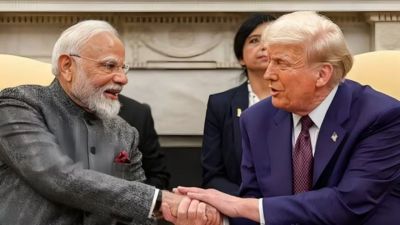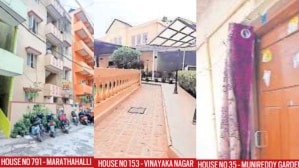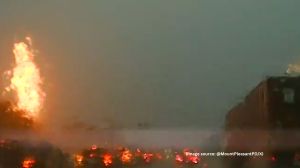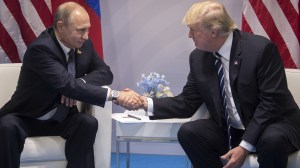Military Digest: Colonel Waibhav Kale’s death in Gaza highlights sacrifices of Indian troops in UN peacekeeping missions
As per the UN data, 179 Indian military personnel have laid down their lives while serving as peacekeepers across the globe.
 Indian Army troops deployed on a UN peacekeeping mission (File)
Indian Army troops deployed on a UN peacekeeping mission (File)The death of Colonel Waibhav Anil Kale (Retd), who was killed in the line of duty in Rafah, Gaza, while serving as a security coordination officer with the United Nations (UN), has brought into focus the risks taken by Indian military personnel in peacekeeping operations across the globe.
Colonel Kale, an Infantry officer with Jammu and Kashmir Rifles (JAKRIF), had taken premature retirement and was working with the UN in a private capacity, yet he died in a conflict zone where the UN flag on his car should have provided him safety and security. Initial UN reports have blamed the Israeli military for targeting Col Kale’s vehicle. As per data put out by the UN, as many as 179 Indian military personnel, including some central armed police forces personnel too, have laid down their lives while wearing the blue helmets of the UN peacekeepers.
Soldiers have been awarded gallantry awards ranging from the Param Vir Chakra to the Sena Medal for their efforts in securing peace between warring factions wherever they have been deployed. Captain Gurbachan Singh Salaria always comes to mind when UN peacekeeping operations are referred to. He was awarded the nation’s highest gallantry award, the Param Vir Chakra, after he laid down his life in Congo in December 1961. More on him later.
India and UN peacekeeping operations
Since its inception, India has been the largest troop contributor to UN missions. So far, India has participated in 49 peacekeeping missions, with the total contribution exceeding 2,53,000 troops, and a significant number of police personnel.
Since 1948, UN Peacekeepers have undertaken 71 Field Missions. Presently, approximately 81,820 personnel serve on 13 peace operations led by UNDPO in four continents, a ninefold increase since 1999. A total of 119 countries have contributed military and police personnel to UN peacekeeping.
Currently, 72,930 of those serving are troops and military observers, and about 8,890 are police personnel.
India has so far provided 17 Force Commanders in various UN missions. Besides the Force Commanders, India also had the honour of providing two Military Advisors and one Deputy Military Advisor to the Secretary General of the United Nations, two Divisional Commanders and seven Deputy Force Commanders.
Indian Army has also contributed lady officers as Military Observers and Staff Officers apart from them forming part of medical units being deployed in UN Missions. The first all-women contingent in peacekeeping missions, a Formed Police Unit (FPU) from India, was deployed in 2007 to the UN Operation in Liberia (UNMIL)
The following have been the missions to which India has contributed since 1950 :
Korea (1950-54)
A parachute field hospital was deployed to facilitate the withdrawal of sick and wounded in Korea.
Lt Gen K S Thimmaya was appointed chairman of the Neutral Nations Repatriation Commission (NNRC), which the UN established. India also provided a custodian force under Maj Gen SPP Thorat.
Indo-China (1954-70)
India provided an infantry battalion and supporting staff for control of Indo-China comprising three states of Vietnam, Cambodia and Laos.
Middle East (1956 – 67)
United Nations Emergency Force (UNEF), where armed troop contingents were deployed for the first time. India contributed an infantry battalion and other support elements.
Congo (ONUC) (1960-64)
Two Infantry Brigades participated and conducted operations. A flight of six Canberra bomber aircraft of the IAF also participated in operations. 39 personnel of the Indian contingent laid down their lives. Capt GS Salaria was awarded posthumously the Paramvir Chakra for action in Katanga, Southern Congo.
Cambodia (UNTAC) (1992-1993)
This mission was set up to supervise ceasefires, disarm combatants, repatriate refugees, and monitor the conduct of free and fair elections.
Mozambique (ONUMOZ) (1992-94)
Two engineer companies, an HQ company, a logistics company, staff officers and military observers were provided.
Somalia (UNITAF & UNOSOM Il) (1993-94)
Indian Army deployed a brigade group comprising 5,000 all ranks and the Navy deployed four battleships.
Rwanda (UNAMIR) (1994-96)
An infantry battalion group, a signal company, an engineer company, staff officers and military observers were provided.
Angola (UNAVEM) (1989-1999)
Besides providing a Deputy Force Commander, an Infantry Battalion group and an Engineer Company were deployed.
Sierra Leone (UNAMSIL) (1999-2001)
Two infantry battalion groups, two engineer companies, a quick reaction company, an attack helicopter unit, a medical unit, and logistic support, in addition to Sector HQ and Force HQ staff, were deployed.
Ethiopia-Eritrea (UNMEE) (2006-08)
The Indian contribution comprised one infantry battalion group, one construction engineer company, and one force reserve company, as well as staff at various headquarters.
Haiti (MINUSTAH) (2004-17)
India contributed three Formed Police Units (FPU) with approximately 500 police personnel from the BSF, CISF, and Assam Rifles from June 2004 to October 2017.
Ivory Coast (UNOCI) (February 2004 to February 2017)
India had deployed two infantry battalion groups, Sector HQ, an engineer company, a level II hospital, and a large number of military observers and staff officers until February 2017.
Liberia (UNIMIL) (2007-16)
India has been contributing both male and female FPUs ex CRPF/RAF in Liberia. An FPU of 125 all-women police personnel served from 2007 to Feb 2016.
Haiti (MINUHJUSTH) (2017-19)
India contributed two FPUs with approximately 280 police personnel from the BSF, CISF & Assam Rifles from November 2017 to July 2019, which have been hugely successful.
Current UN peacekeeping operations with Indian participation
Lebanon (UNIFIL) (Since December 1998)
One infantry battalion group comprising 762 all ranks and 18 staff officers deployed in the mission.
Congo (MONUC/MONUSCO)
(Since January 2005)
India has deployed an augmented infantry brigade group with a level III Hospital and two FPUs.
Sudan (UNMIS/UNMISS) (Since April 2005):
India has contributed to two infantry battalion groups, an engineer signal company, level-II & level-II-plus hospital.
Golan Heights (UNDOF) (Since Feb 2006):
A logistics battalion with 188 personnel has been deployed to look after the logistics security of UNDOF.
India has also deployed staff officers, experts on mission and military observers and independent police officers in UN operations in the United Nations Peacekeeping Force in Cyprus (UNFICYP), United Nations Truce Supervision Organization (UNTSO), United Nations Mission for the Referendum in Western Sahara (MINURSO), United Nations Interim Security Force for Abyei (UNISFA), United Nations Mission to support the Hudaydah Agreement (UNMHA) and United Nations Assitance Mission in Somalia (UNSOM).
Captain Gurbachan Singh Salaria
Captain Salaria was born on November 29, 1935, and his village was close to Shakargarh (in pre-partition Punjab), and his family later relocated to Jangal, in Gurdaspur district of Punjab.
His parents were Munshi Ram and Dhan Devi. He enrolled in the King George Royal Indian Military College in Bangalore in 1946 before transferring to the King George Royal Military College (now Rashtriya Military School Chail in Himachal Pradesh).
Captain Salaria Joined the National Defence Academy (NDA) as part of its 9th Course and was in the Bravo Squadron. He was subsequently commissioned from the Indian Military Academy, Dehradun into the 3/1 GORKHA RIFLES on June 9, 1957.
3/1 GR was part of the 99 Infantry Brigade Group which marked Indian presence in the United Nations Peacekeeping operation called the Opération des Nations Unies au Congo (ONUC) in 1961-62.
 Captain Gurbachan Singh Salaria was awarded the nation’s highest gallantry award, the Param Vir Chakra, posthumously.
Captain Gurbachan Singh Salaria was awarded the nation’s highest gallantry award, the Param Vir Chakra, posthumously.
From December 2, 1961, onwards, the number of violent incidents in Katanga increased and ultimately led to open hostilities. The Gendarmerie started attacking the UN troops and set up roadblocks.
On December 5, 1961, under Operation UNOKART, 3/1 GORKHA RIFLES was tasked to clear a roadblock by the gendarmerie at a vital intersection in Elizabethville, Katanga. Captain Gurbachan Singh Salaria was entrusted with this responsibility.
At around 1.12 pm, Captain Salaria and his small force approached the roadblock from a distance of 1,500 yards. They came under heavy automatic and small-arms fire from an undetected enemy position positioned on his right flank. Along with two armoured vehicles, the opposition to Captain Salaria’s small squad included roughly 90 men.
Capt Salaria led a charge while armed with a rocket launcher, khukris, and bayonets. He and his troops engaged the enemy in a valiant battle, killing 40 of them while knocking out two armoured vehicles.
However, a burst of automatic fire struck Captain Salaria in the neck, but he kept fighting until he passed out from excessive bleeding. He was posthumously awarded the Param Vir Chakra.







